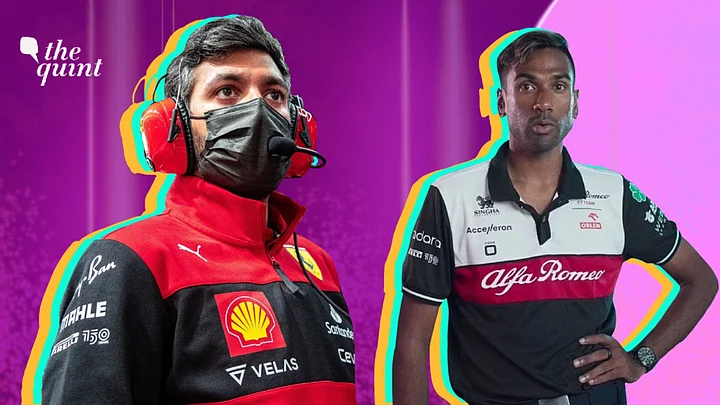Formula 1, regarded widely as the pinnacle of motorsport, was nowhere near the pinnacle of sporting popularity in India at the commencement of the new century. The sport was not in its nascent phase – it had just completed its golden jubilee, with the first edition being held way back in 1950.
Yet, with an aura of elitism circumscribing it, Formula 1 was, amid the less financially fortunate nations, regarded as a business meant solely for the obscenely affluent.
The apprehension changed to an extent when an Indian started getting spotted at the paddocks, and that too, alongside perhaps the greatest driver the sport has ever produced – Michael Schumacher. It was later discovered that ever so self-effacing man, who was playing a crucial role at Ferrari, was Balbir Singh, Schumi’s physical trainer.
In 1996, one of his uncles told the German driver about a trainer who had miraculously evanesced all his physical troubles, leading to the appointment, and subsequently, a cordial relationship which lasted a decade.
The seven-time world champion’s reliance on Balbir was so inordinate, that when the Punjab-born trainer eventually left the job to work on his own wellness centre, Schumacher called it a ‘very difficult’ phase, for he could ‘always trust Balbir 150 per cent.’
Ravin Jain: The Man Who Will Be Jockeying the Prancing Horses
Two decades later, another Indian-origin individual will be seen donning the striking red with the prancing horse insignia, albeit in a different capacity. Ravin Jain will be responsible for all the major race-related decisions for Ferrari in the impending 2023 season, after being appointed as the chief strategist of the Italian team.
With his roots in India, Jain was brought up in England, where he did his schooling at Birmingham’s King Edward’s School. He then pursued a bachelor’s degree in Physics from the University of Oxford, before completing a master’s degree in Mathematical and Theoretical Physics.
An F1 enthusiast since childhood, Jain got his first opportunity to work in the sport when he was still a teenager, interning in the ‘Data Processing and Analysis’ team of Caterham in 2013.
A year later, he found himself in another apprenticeship role – that in the ‘Software Design and Strategy' department of Williams.
Whilst pursuing his master’s degree, Jain worked as an apprentice in Ferrari’s ‘Mathematical Modelling’ division for three months back in 2015, before converting it to a full-time role in the same department a year later. Jain was shifted to the ‘Race Strategy’ team soon after his appointment, whilst after serving six years in the department, he has now been promoted to the role of chief strategist.
Jain will be replacing Inaki Rueda, a veteran in the sport with experience of nearly 20 years, who has now been shifted to a factory-based role.
The decision has been received as alleviating among the majority of the Tifosi, after what was a wretched 2022 season from the decision-making perspective, marred with a plethora of strategic blunders.
Rithvik Dhananjay Reddy To Call the Shots at Alfa Romeo
The Ferrari employee, however, will not be the only Indian-origin strategist who will be responsible for major decision-making this season, as placed at the Alfa Romeo pit wall will be Rithvik Dhananjay Reddy.
Unlike Jain, Reddy did his schooling in India’s Bengaluru. Another childhood F1 fan, he was only 15 years of age when he first stepped foot in the industry, with an internship role at the local Red Rooster Racing team.
The determination to make it to the top echelons prompted him to study Motorsport Engineering at Oxford Brookes University, while in 2015, he was appointed as an Aero Systems Placement Engineer at AlphaTauri, which back then was known as Toro Rosso.
In 2021, Reddy shifted base to join Alfa Romeo, and has since been an integral part of their race strategy department.
Explaining the significance of his role to Deccan Herald, he stated:
"Every decision I make affects me, and it also affects the livelihood of 600 people who work at the factory. There are also two drivers who have put their faith in this team. They have given us their careers so it’s quite a big responsibility."
The sport has had two Indian drivers in Narain Karthikeyan and Karun Chandhok, who, despite being trailblazers in terms of representing the nation, could not have a significantly prolonged stay on the grid. The former could only accumulate five points in his career from 48 race entries, whilst in his 11 races, Chandhok could not open his points tally.
Now, however, with Jain and Reddy at the pit wall for renowned teams, and Jehan Daruvala and Kush Maini racing in the junior category called Formula 2, India’s future does look bright in this sport.
(At The Quint, we question everything. Play an active role in shaping our journalism by becoming a member today.)
